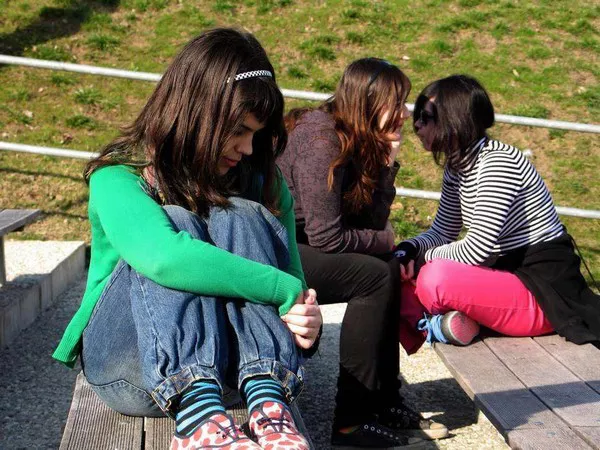Bipolar disorder, characterized by extreme mood swings between mania and depression, is a mental health condition that affects millions of people worldwide. The understanding and treatment of bipolar disorder have evolved significantly over time. This article explores the historical and evolutionary origins of bipolar disorder, tracing its recognition and conceptualization from ancient times to the present day.
Ancient Descriptions of Bipolar Disorder
1. Early References in Ancient Texts
The earliest known references to symptoms resembling bipolar disorder can be found in ancient texts. The ancient Greeks and Romans documented behaviors that closely resemble the manic and depressive episodes associated with bipolar disorder.
Hippocrates: The Greek physician Hippocrates (460-370 BCE) is often regarded as the “father of medicine.” He described “melancholia” (depression) and “mania” (elevated mood) as distinct conditions.
Hippocrates believed that these states were caused by an imbalance of bodily fluids or “humors.”
Aretaeus of Cappadocia: A Greek physician from the 1st century CE, Aretaeus provided one of the earliest detailed descriptions of what is now recognized as bipolar disorder. He observed that individuals could experience alternating periods of mania and depression, noting the cyclical nature of these mood changes.
2. Middle Ages and Renaissance
During the Middle Ages, the understanding of mental illness, including bipolar disorder, was influenced by religious and superstitious beliefs. Mental illness was often attributed to demonic possession or divine punishment.
Paracelsus: The Swiss physician Paracelsus (1493-1541) was among the first to challenge these views. He suggested that mental illnesses, including mood disorders, had natural causes and could be treated with medicine.
Modern Conceptualization of Bipolar Disorder
1. 19th Century Developments
The 19th century marked significant advancements in the understanding and classification of mental illnesses, including bipolar disorder.
Jean-Pierre Falret: The French psychiatrist Jean-Pierre Falret (1794-1870) is credited with coining the term “folie circulaire” (circular insanity) to describe the cyclical mood changes seen in bipolar disorder. He emphasized the alternating periods of mania and depression as a defining feature of the condition.
Jules Baillarger: Another French psychiatrist, Jules Baillarger (1809-1890), independently described a similar condition he called “folie à double forme” (dual-form insanity). Baillarger’s and Falret’s work laid the foundation for the modern understanding of bipolar disorder.
2. Emil Kraepelin’s Contributions
The German psychiatrist Emil Kraepelin (1856-1926) played a crucial role in the classification of bipolar disorder as a distinct mental illness. Kraepelin’s work in the late 19th and early 20th centuries led to the identification of “manic-depressive illness” as a separate diagnostic category.
Manic-Depressive Illness: Kraepelin’s extensive clinical observations and systematic documentation of patients’ symptoms highlighted the episodic nature of bipolar disorder. He distinguished it from schizophrenia, emphasizing the cyclical mood changes as the hallmark of the condition.
3. 20th Century and Beyond
The 20th century saw further refinement of the diagnostic criteria for bipolar disorder and advancements in treatment.
Diagnostic and Statistical Manual of Mental Disorders (DSM): The American Psychiatric Association (APA) published the first edition of the DSM in 1952. Bipolar disorder, initially classified under “manic-depressive illness,” has undergone several revisions in subsequent editions. The DSM-III (1980) introduced the term “bipolar disorder,” distinguishing it from unipolar depression.
Lithium Treatment: The discovery of lithium as an effective treatment for bipolar disorder by Australian psychiatrist John Cade in 1949 revolutionized the management of the condition. Lithium remains a cornerstone of bipolar disorder treatment to this day.
See Also: How Do You Confirm Bipolar Disorder?
Evolutionary Perspectives on Bipolar Disorder
1. Genetic and Biological Basis
Bipolar disorder has a strong genetic component, with heritability estimates ranging from 60% to 80%. Family, twin, and adoption studies have consistently shown that bipolar disorder runs in families, suggesting a significant genetic contribution.
Genetic Studies: Advances in genetic research have identified several risk genes associated with bipolar disorder. These genes are involved in neurotransmitter regulation, neuroplasticity, and circadian rhythms, among other functions.
Neurobiological Factors: Neuroimaging studies have revealed structural and functional brain abnormalities in individuals with bipolar disorder. These include alterations in brain regions involved in mood regulation, such as the prefrontal cortex, amygdala, and hippocampus.
2. Evolutionary Theories
Several evolutionary theories have been proposed to explain the persistence of bipolar disorder in the human population despite its significant impact on functioning and quality of life.
Balancing Selection: One theory suggests that the genetic variants associated with bipolar disorder may confer certain adaptive advantages. For example, the heightened energy and creativity seen in manic episodes might have been advantageous in certain contexts, balancing the disadvantages of depressive episodes.
Social Brain Hypothesis: Another theory posits that the social and emotional sensitivity associated with bipolar disorder may have conferred benefits in complex social environments. Enhanced social cognition and empathy could have facilitated cooperation and group cohesion.
FAQs
Q1: What are the main types of bipolar disorder?
A1: Bipolar disorder is categorized into several types based on the pattern and severity of mood episodes:
Bipolar I Disorder: Characterized by at least one manic episode, which may be preceded or followed by hypomanic or major depressive episodes.
Bipolar II Disorder: Defined by a pattern of depressive episodes and hypomanic episodes, without full-blown manic episodes.
Cyclothymic Disorder: Involves periods of hypomanic symptoms and depressive symptoms lasting for at least two years (one year in children and adolescents) that do not meet the criteria for a hypomanic episode or a major depressive episode.
Q2: How is bipolar disorder diagnosed?
A2: Bipolar disorder is diagnosed based on clinical criteria outlined in the DSM-5. A thorough assessment by a mental health professional, including a detailed history of mood episodes, symptom patterns, and impact on functioning, is essential. Family history and medical evaluation may also be considered to rule out other conditions.
Q3: What are the common treatments for bipolar disorder?
A3: Treatment for bipolar disorder typically involves a combination of medication and psychotherapy:
Medications: Mood stabilizers (e.g., lithium), antipsychotic medications, and antidepressants are commonly used to manage mood episodes and prevent relapse.
Psychotherapy: Cognitive-behavioral therapy (CBT), psychoeducation, and interpersonal and social rhythm therapy (IPSRT) can help individuals understand and manage their condition, develop coping strategies, and stabilize daily routines.
Q4: Can lifestyle changes help manage bipolar disorder?
A4: Yes, lifestyle changes can play a significant role in managing bipolar disorder. Regular exercise, a healthy diet, consistent sleep patterns, stress management techniques, and avoiding alcohol and recreational drugs can help stabilize mood and reduce the risk of mood episodes.
Q5: Is bipolar disorder more common in certain populations?
A5: Bipolar disorder affects people of all ages, genders, and ethnicities. However, it typically emerges in late adolescence or early adulthood. There is no significant difference in prevalence between men and women, although women may be more likely to experience rapid cycling and mixed episodes.
Conclusion
The understanding of bipolar disorder has evolved significantly over time, from ancient descriptions of mood changes to modern diagnostic criteria and treatment approaches. Genetic and neurobiological research continues to uncover the underlying mechanisms of the disorder, while evolutionary theories offer insights into its persistence in the human population. Despite the challenges, advancements in treatment and ongoing research provide hope for individuals with bipolar disorder, enabling them to manage their condition and lead fulfilling lives.
Related topics:





















